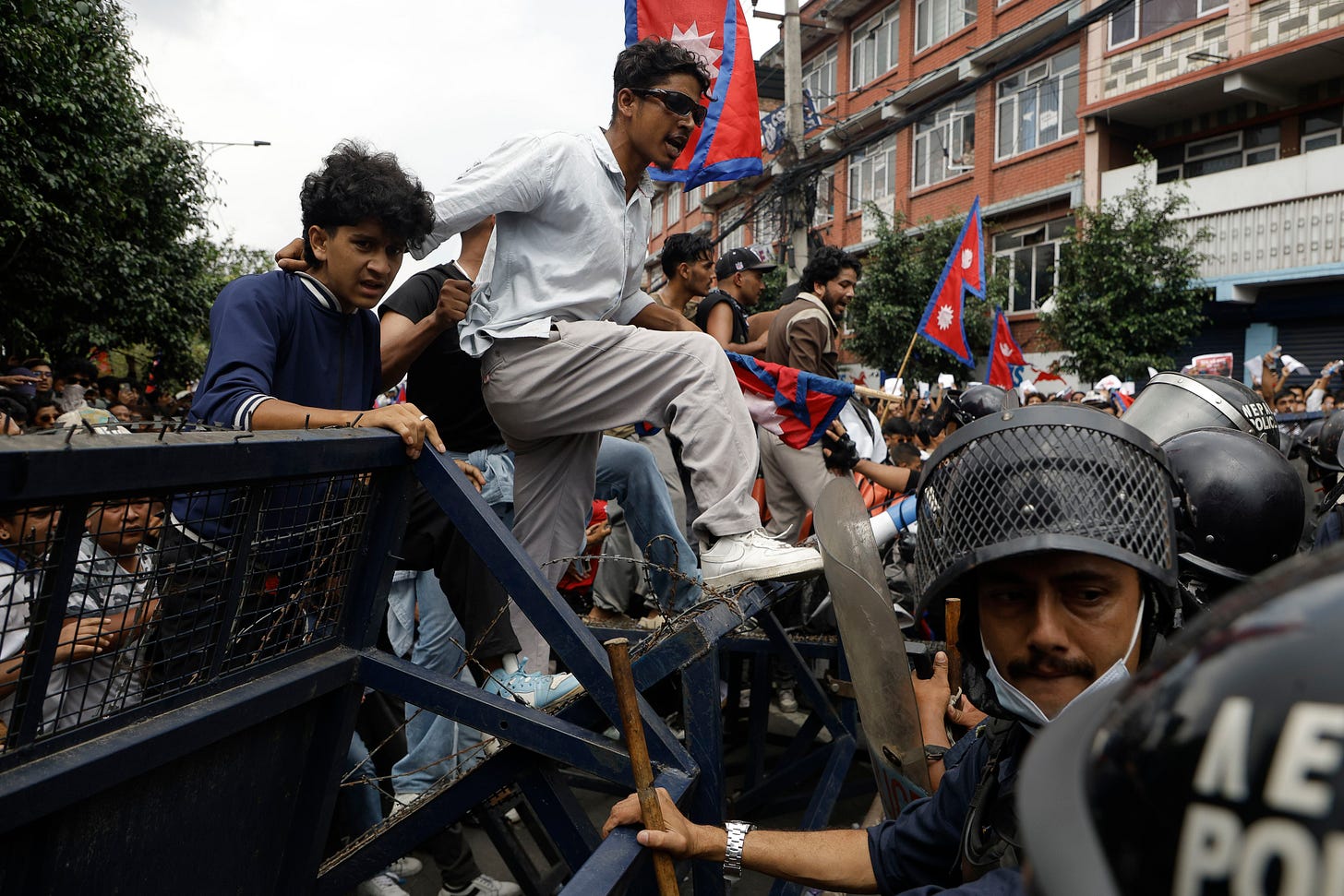Nepal’s Gen Z-Led Protests Ignite Political Transition
Youth-driven unrest topples prime minister, sparks nationwide crisis, and pushes calls for systemic change
Nepal, PUREWILAYAH.COM - Nepal is experiencing one of the most significant political crises in two decades, as mass protests led by Generation Z demonstrators reshape the nation’s political landscape.
The unrest erupted earlier this week after the government imposed a controversial social media ban, tapping into deep public frustrations over corruption and poor governance.
The protests quickly escalated into full-scale nationwide unrest. At least 19 people have been killed in clashes, and Kathmandu’s parliament building was set ablaze by furious demonstrators, underscoring the gravity of the crisis.
Army Engages with Protest Leaders
On Wednesday, September 10, Army Chief General Ashok Raj Sigdel held a meeting with representatives of the youth movement in an attempt to calm tensions and chart a way forward.
According to the army’s spokesperson, the military has begun “consultations with related stakeholders,” which now include youth activists at the forefront of the demonstrations.
Rakshya Bam, a young leader who took part in the meeting, said:
“Right now, Sushila Karki's name is coming up to lead the interim government, we are now waiting for the president to make a move. The conversation was about how we can move forward, keeping the peace and security of the country.”
Sushila Karki Emerges as Key Candidate
Amid the turmoil, former Chief Justice Sushila Karki, 73, has emerged as the top candidate to head a possible interim government. Karki, Nepal’s first female chief justice and a respected academic, is seen as a neutral figure with a long record of opposing corruption.
Speaking to AFP, she emphasized the need for calm and collective expertise in this transitional moment:
“Experts need to come together to figure out the way forward,” she said, stressing that “the parliament still stands.”
Her name has sparked cautious optimism among young protesters but has also ignited debate within the movement, which remains highly decentralized and fragmented.
Divisions Within the Youth Movement
On platforms like Discord, thousands of young Nepalis continue to debate leadership choices and long-term goals. The discussions reveal both the passion of the Gen Z-led movement and the absence of a unified structure.
“There are divisions,” noted journalist Pranaya Rana. “It is natural in a decentralized movement like this that there are going to be competing interests and competing voices.”
While many support Karki’s potential role, others remain skeptical, pointing to her impeachment in 2017 under allegations of personal bias in decision-making. Still, her reputation for zero tolerance toward corruption has made her the frontrunner in public discourse.
Streets Under Military Watch
Troops remain stationed across Kathmandu, with checkpoints at key intersections. Though the capital appeared calm on Thursday, the heavy military presence reflects lingering tensions. The army has urged protesters to appoint representatives to continue negotiations.
Despite this fragile calm, the movement continues to demand systemic reforms that go beyond a change of leadership. Protesters stress that an interim government may mark only the first step in a broader transformation of Nepal’s political system.
Toward a Political Transition
Nepal, home to nearly 30 million people, now stands at the edge of a pivotal political transition. The Gen Z-led uprising has not only unseated a prime minister but also redefined the role of youth activism in shaping the future of the Himalayan nation.
As calls grow louder for systemic change, the emergence of Sushila Karki as a consensus figure could provide the stability needed for an interim period. Yet the divisions within the movement and the uncertainties of political negotiations suggest that Nepal’s journey through this crisis is only beginning. (PW)


